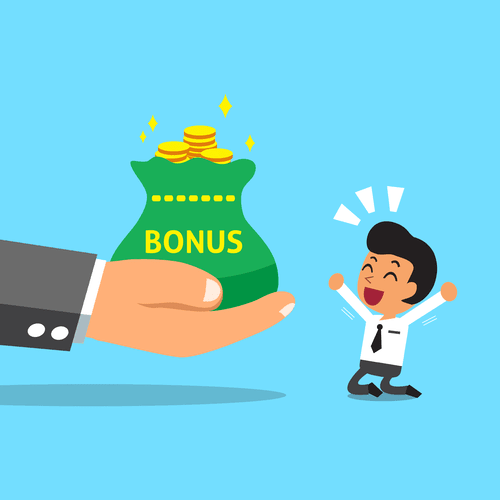
Another common sales discount is « 2% 10/Net 30 » terms, which allows a 2% discount for paying within 10 days of the invoice date, or paying in 30 days. Discover practical strategies to implement early payment discounts, improve cash flow, and negotiate favorable terms with clients. If you’re in business and invoice customers, the answer is likely a resounding yes. And if your business needs cash, you may consider offering an early payment discount.

How Much Early Payment Discount To Offer, If Any
This is most common when the sales discount amount is so small that separate presentation does not yield any material additional information for readers. Depending on your needs and goals, offering early payment discounts can help speed up the collection process—but it can also pose some challenges, especially when not implemented properly. It’s best to consult your accountant or bookkeeper to analyze the impact of early payment discounts on your business. Suppose Paul’s Plumbing invoices a customer for the installation of a new bathroom and sink faucet for $1,000. The term for the early payment discount is 2%/10 Net 30, so if you Accounting for Churches receive payment in 10 days or less, the invoice will be reduced to $980. The screenshot below shows how this payment term is displayed on an invoice from QuickBooks Online.

Key Terms and Definitions: Accounting for Early Payment Discounts
Small early payment discounts might be insignificant and can be directly deducted from the invoice total without a separate line item. Let’s assume that a company sells goods on credit and offers an early payment discount expressed as 1/10, net 30. This means that a customer is allowed to deduct 1% of the invoice amount, if payment is made within 10 days (instead early pay discount accounting of paying the full amount in 30 days). Therefore, an invoice of $1,000 with terms of 1/10, net 30 means that the $1,000 obligation will be settled in full for $990 if it is paid within 10 days. Some businesses choose to offer early payment discounts as an ongoing incentive to shorten the cash conversion cycle. These incentives are often limited to a particular timeframe, such as if the business is trying to bolster its cash reserves before a quarterly report or to offset some loss.
- Understanding these benefits helps businesses on both sides of the transaction make informed decisions that improve operations and foster better relationships.
- This means that if the buyer pays the invoice within 10 days, they can deduct 2% from the total amount owed; otherwise, the full invoice amount is due in 30 days.
- Further, offering any discount level may not be feasible or reasonable, depending on your business structure.
- For customers, early payment discounts can be a way to save money on purchases.
- If you’re short on time the frequently asked questions below provide a quick snapshot of what AP teams need to know about early payment discounts.
AP Automation Tour
If your company has performance targets related to financial metrics, early payments can help you reach these goals. For example, early payment discounts can decrease your DSO — the average income statement number of days that it takes you to collect revenue after the sales date. However, using discounts instead of factoring is only possible if your customers already support an early payment program.
- Calculating early payment discounts involves determining the percentage reduction applied to an invoice when payment is made before its due date.
- So, the longer the buyer takes to close out their invoice, the less of a discount they will receive.
- However, many other companies would love to take advantage of prompt payment discounts but simply do not have the proper AP processes in place to qualify for early payment discounts.
- Although early payment programs can enhance cash flow, their effectiveness can be unpredictable.
- Chocolobster Ltd. is a leading manufacturer of frozen, pre-made chocolate-covered seafood dishes, which are sold in specialty grocers across the Eastern Seaboard.
- Whether you are a small business owner or part of a larger organization, understanding this tactic can play a significant role in optimizing your financial operations.

Since the figures in this format are rigid, calculating the appropriate discount is straightforward. A sales discount is a reduction in the price of a product or service that is offered by the seller, in exchange for early payment by the buyer. A sales discount may be offered when the seller is short of cash, or if it wants to reduce the recorded amount of its receivables outstanding for other reasons. Understanding the various forms of early payment discounts is essential for businesses aiming to implement these strategies effectively.
- Negotiating early payment discounts can foster stronger relationships between buyers and suppliers.
- If you opt for static discounts, customers may also take advantage of static discount terms attached to an invoice, deducting the discount without actually paying early.
- Discover practical strategies to implement early payment discounts, improve cash flow, and negotiate favorable terms with clients.
- If the answer to any or all of these is “yes,” then offering an early payment discount could make sense for your business.
- Overall, early payment discounts can be a strategic tool for both buyers and sellers.
- Like any transaction, you must create journal entries reflecting early payment discounts.
The purpose of an early payment discount is to incentivize customers to pay early, which can improve a business’s cash flow and reduce the risk of late payments. For vendors, early payment discounts are a strategic way to enhance cash flow. By encouraging buyers to pay sooner, vendors can access funds more quickly, which allows them to manage their operations more effectively. This quicker cash inflow reduces the strain of waiting for payments and helps vendors meet their own financial obligations, such as payroll and supplier payments, in a timely manner. Automated workflows enabled Simple Mills to process invoices efficiently so the AP team consistently paid within discount windows. This approach strengthened relationships with vendors and resulted in significant cost savings over time.
Evaluate Cost-Benefit Analysis: Analyze the potential savings versus the impact on cash flow.
As such, the final discount itself will commonly operate the same as a static or dynamic type. Most businesses do not offer early payment discounts, so there is no need to create an allowance for sales discounts. By doing so, you can immediately reduce sales by the amount of estimated discounts taken, thereby complying with the matching principle. Offering a range of discount options, such as varying percentages based on different payment timelines, can make the proposal more appealing. Additionally, businesses might consider bundling early payment discounts with other incentives, such as loyalty rewards or future purchase discounts.
- If the early payment discount applies to inventory purchases, the discounted price becomes the cost of the inventory for accounting purposes.
- Any company that engages in regular B2B transactions can leverage these discounts to improve cash flow and reduce costs.
- The goal is to entice customers to pay early, and in return, companies must record the discount as an expense.
- This liquidity is crucial for maintaining operations, investing in new projects, or paying off debts.
- Ever stared at an invoice with a tempting “2% discount for payment within 10 days” offer and wondered if it’s worth the early scramble?
A better way to send and receive invoices.

This concept involves a seller giving a discount to a buyer for paying their invoice before the due date. Such discounts are not only a financial incentive but also play a crucial role in enhancing business relationships, optimizing cash flow, and improving financial stability. Moreover, early payment discounts can help businesses manage their working capital more effectively.
